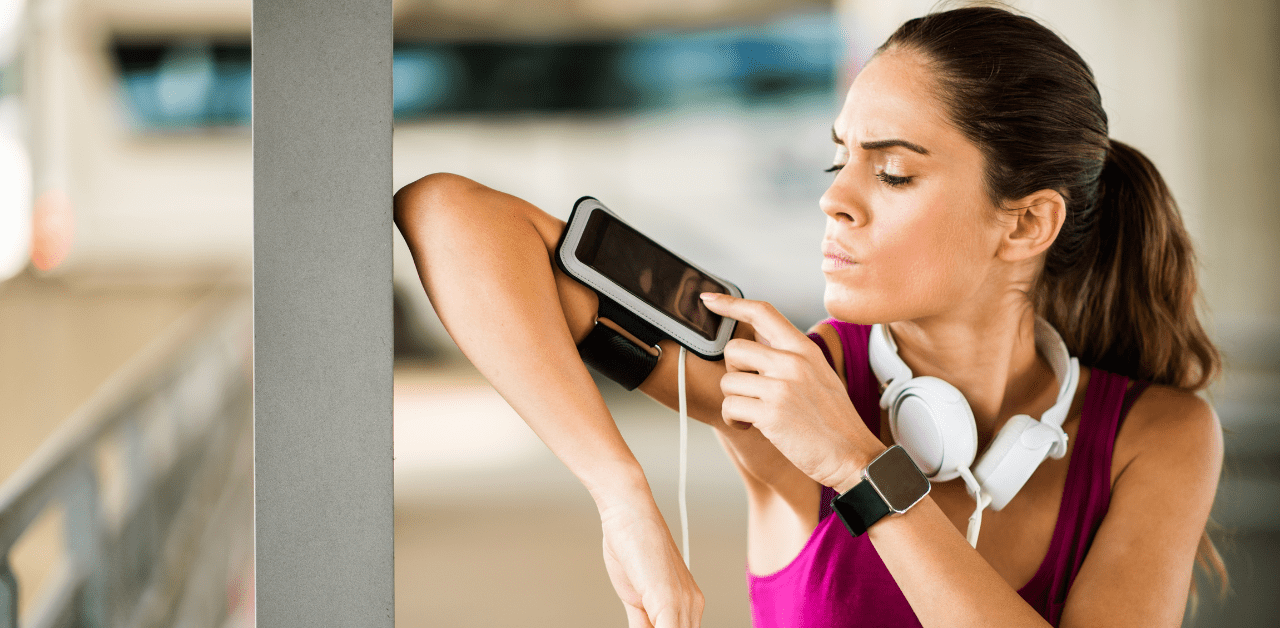Wearable technology has rapidly gained popularity across various industries, and the banking sector is no exception. The integration of wearable devices in banking has opened up a world of opportunities, offering numerous benefits for both financial institutions and customers alike.
With the ability to perform secure transactions, access account information, and receive personalized notifications, wearable technology is revolutionizing the way we interact with our finances.
In this article, we will explore the benefits of wearable technology in banking, from enhanced security and convenience to improved engagement and innovation. Join us as we delve into the exciting possibilities that wearables bring to the world of banking.
What is Wearable Technology In Banking?
Wearable technology in banking refers to the use of wearable devices, such as smartwatches, fitness trackers, and other accessories, to perform banking and financial transactions. These devices are equipped with various technologies, including near-field communication (NFC), radio frequency identification (RFID), and contactless point of sale, to enable secure and convenient payments and cash transfers.
One of the key benefits of wearable technology in banking is its convenience. Users can link their wearable devices to their credit cards or bank accounts and make payments by simply tapping the device against a payment terminal. This eliminates the need to carry physical cards or cash and provides a seamless payment experience.
Benefits of Using Wearables Technology in Banking
1. Enhanced Security with Biometrics and geo-location
One of the key benefits of using wearable technology in banking is the enhanced security it provides through biometrics and geo-location features. Wearables often incorporate biometric authentication methods, such as fingerprint sensors or facial recognition, to ensure secure access to banking applications and transactions. These biometric features add an extra layer of protection against unauthorized access and fraud, as they are unique to each individual and difficult to replicate. Additionally, wearable devices can leverage geo-location technology to verify the user’s physical location during transactions.
2. Sleek Design and Always-On Devices
Wearable devices in banking are designed with sleek aesthetics, combining fashion and functionality. These devices, such as smartwatches or fitness trackers, are often worn as accessories and can seamlessly blend into everyday attire. The sleek design not only enhances the user’s style but also promotes a sense of comfort and wearability, making them more likely to be used regularly.
Moreover, wearable devices are always on, meaning they are readily available for banking activities at any time. Users can conveniently access their financial information, make payments, or perform other banking tasks without the need to carry additional cards or devices.
3. Convenience and Accessibility
Wearable technology brings unparalleled convenience and accessibility to banking services. By linking their wearable devices to their bank accounts or credit cards, users can make contactless payments or perform transactions swiftly and effortlessly.
Whether it’s paying for a purchase at a store or transferring funds between accounts, wearables enable users to complete these tasks with a simple gesture, eliminating the need to carry physical cards or cash. Furthermore, wearables provide quick and easy access to crucial financial information. Users can check their account balances, monitor transactions, and receive real-time notifications directly on their wearable devices.
4. Enhanced Security and Privacy
Improved security and privacy features are provided by wearable technology in banking to safeguard users’ financial data. Wearable devices use encrypted communication channels and secure authentication methods, making it difficult for hackers or unauthorized individuals to intercept or access sensitive data. This ensures that transactions and personal information remain secure throughout the banking process. Moreover, wearable devices provide an added layer of privacy by reducing the need to share personal financial information with third parties.
5. Improved Engagement and Personalization
Wearable technology enables banks to engage with customers on a more personal level, fostering stronger relationships and enhancing the overall banking experience. Through personalized notifications and alerts, wearables can p+rovide users with tailored updates on their accounts, transactions, and financial goals. For example, users can receive real-time alerts for low balances, suspicious activities, or upcoming bill payments, helping them stay on top of their finances and make informed decisions.
6. Increased Productivity and Efficiency
Wearable devices can boost productivity and efficiency within the banking industry. For bank employees, wearing smartwatches or other wearables can provide quick access to customer data, allowing them to provide more efficient and personalized customer support. They can access account information, process transactions, and respond to customer inquiries promptly, streamlining the overall banking operations.
Moreover, wearables can enable users to perform banking tasks on the go without the need for a computer or smartphone. This saves time and effort, especially for simple transactions like checking account balances or making quick payments.
7. Driving Innovation and Differentiation
The integration of wearable technology in banking showcases innovation and helps financial institutions differentiate themselves in a competitive market. By embracing the latest advancements in technology, banks can attract tech-savvy customers and position themselves as forward-thinking organizations. Wearables provide a platform for banks to experiment with new features and services, creating unique offerings that set them apart from traditional banking models.
Furthermore, wearable technology opens up opportunities for collaboration between banks and technology companies, leading to exciting partnerships and the development of innovative solutions.
Top Wearable Payment Devices in the Market
Here’s an in-depth look at some of the top wearable payment devices in the market:
1. Apple Watch
The Apple Watch is undeniably one of the top wearable payment devices in the market. With its sleek design and advanced features, it has gained immense popularity among users. The Apple Watch supports near-field communication (NFC) technology, allowing users to make secure and contactless payments at compatible point-of-sale terminals.
By simply double-clicking the side button and holding the watch near the payment terminal, users can complete transactions swiftly and effortlessly. The Apple Watch also offers seamless integration with Apple Pay, enabling users to link their credit or debit cards and make payments directly from their wrists. Additionally, the Apple Watch provides enhanced security with features like passcode protection and wrist detection, ensuring that only authorized users can access and use the device for payments.
2. Jawbone UP4 Fitness Tracker
The Jawbone UP4 fitness tracker stands out as a wearable payment device that combines fitness tracking capabilities with contactless payment functionality. In collaboration with American Express, Jawbone has integrated a secure payment system into their fitness trackers, allowing users to conveniently make payments while keeping track of their health and fitness goals.
The UP4 fitness tracker utilizes NFC technology to enable contactless payments, similar to other wearable payment devices. By linking their American Express card to the Jawbone UP4, users can tap their devices against payment terminals to complete transactions. This integration of fitness tracking and payment capabilities offers users a versatile device that caters to their health and financial needs.
3. Samsung Gear G3
The Samsung Gear G3 is another top wearable payment device that has gained popularity among users. This smartwatch boasts a stylish design and a range of features, including the ability to make payments using NFC technology. By simply tapping the Gear G3 against compatible payment terminals, users can complete transactions without the need for physical cards or cash.
The Gear G3 also offers enhanced security with features such as Samsung Pay’s tokenization process, which replaces card details with unique tokens, ensuring that sensitive information is not transmitted during transactions. Additionally, the Gear G3 provides users with the convenience of accessing banking information, receiving notifications, and managing finances directly from their wrists, making it a versatile and practical wearable payment device.
4. Fitbit
Fitbit, a well-known brand in the fitness tracking market, has also ventured into the world of wearable payment devices with Fitbit Pay. Fitbit Pay is a wristband that allows users to make contactless payments by linking their credit or debit cards to their Fitbit account.
With NFC technology, users can make secure payments by simply tapping their Fitbit device against payment terminals. Fitbit Pay offers a convenient and streamlined payment experience for users, eliminating the need to carry physical cards or cash. Additionally, Fitbit Pay ensures secure transactions with built-in security features, such as passcode protection and the ability to turn off payments remotely in case of loss or theft.
5. Ringly
Ringly is a unique wearable payment device that combines fashion and functionality. Ringly offers a range of intelligent rings and bracelets that not only serve as stylish accessories but also provide contactless payment capabilities. These devices use NFC technology to enable users to make secure payments by simply tapping their ring or bracelet against payment terminals.
Ringly’s payment features are compatible with major credit card networks, allowing users to link their cards and make payments effortlessly. With customizable designs and an emphasis on fashion, Ringly offers a wearable payment device that seamlessly integrates into users’ everyday lives and personal style.
How do Wearable Payment Devices Work?
Wearable payment devices work by leveraging technologies such as near-field communication (NFC) and contactless payment services to enable users to make secure and convenient transactions. Here’s an overview of how wearable payment devices work:
Linking the Device
To use a wearable payment device, such as a smartwatch or fitness tracker, the user needs to connect the device to a credit card or bank account. This is typically done through a mobile app or the device’s settings. The user enters their payment information, which is securely stored on the device.
NFC Technology
Many wearable payment devices utilize NFC technology, which allows for contactless communication between the device and a payment terminal. NFC enables the transfer of payment data when the device is held near an NFC-enabled payment terminal.
Making Payments
To make a payment using a wearable device, the user simply taps or holds their device near the payment terminal. The device communicates with the terminal using NFC, transmitting the necessary payment information securely. The payment terminal processes the transaction, deducting the payment amount from the user’s linked credit card or bank account.
Security Measures
Wearable payment devices incorporate various security measures to protect users’ financial information. These measures may include encryption of payment data, tokenization (replacing card details with unique tokens), and additional authentication methods like passcodes or biometric verification (e.g., fingerprint or facial recognition).
Compatibility
Wearable payment devices are typically compatible with payment networks and services such as Apple Pay, Samsung Pay, Google Pay, or specific bank apps. This ensures that users can make payments at a wide range of merchants and establishments that accept contactless payments.
Additional Features
In addition to payment capabilities, wearable payment devices often offer additional features such as fitness tracking, notifications, and access to other mobile apps. These features enhance the overall functionality and value of the device, providing users with a comprehensive wearable experience.
Conclusion
Wearable technology has ushered in a new era of convenience, security, and innovation in the banking sector. The benefits of using wearable technology in banking are manifold, enhancing both customer experiences and operational efficiency for financial institutions. Wearable technology in banking not only makes economic transactions more efficient and secure but also enhances the overall banking experience, giving customers greater control over their finances while propelling the industry into a future defined by innovation and customer-centric solutions.



